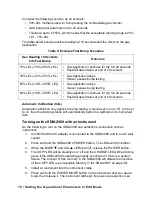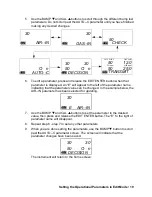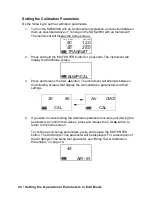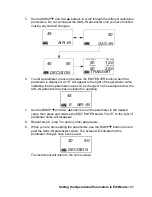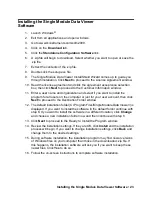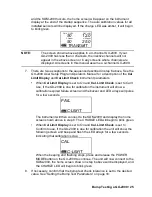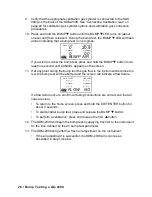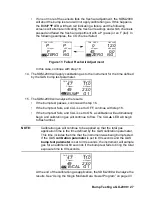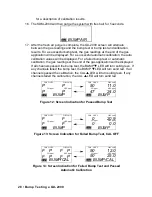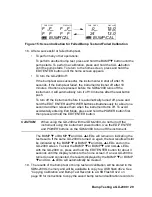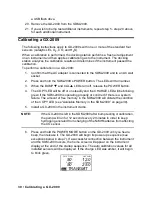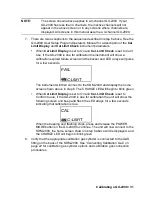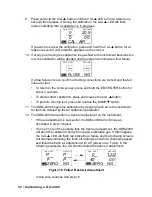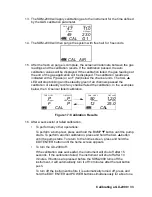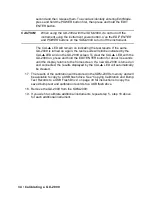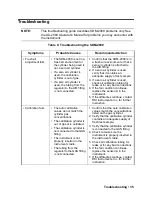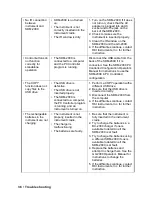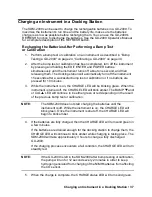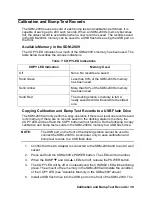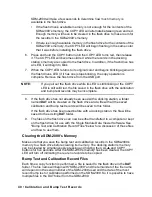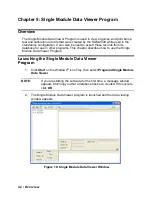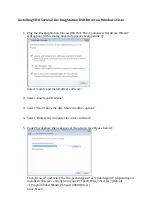
Bump Testing a GX-2009 • 27
•
If one or more of the sensors fails the fresh air adjustment, the SDM-2009
will abort the bump test and will not apply calibration gas. If this happens,
the BUMP
LED will flash red indicating a failure and the following
screens will alternate indicating the fresh air readings and which channels
passed and failed the fresh air adjustment with a P (pass) or an F (fail). In
the following examples, the CO channel failed.
Figure 11: Failed Fresh Air Adjustment
In this case, continue with step 18.
14. The SDM-2009 will apply calibration gas to the instrument for the time defined
by the GAS bump test parameter.
15. The SDM-2009 will analyze the results.
•
If the bump test passes, continue with step 16.
•
If the bump test fails, and CAL is set to OFF, continue with step 16.
•
If the bump test fails, and CAL is set to ON, a calibration will automatically
begin and calibration gas will continue to flow. The CAL
LED will begin
to flash amber.
NOTE:
Calibration gas will continue to be applied so that the total gas
application time is the time defined by the GAS calibration parameter.
This time includes the time that the instrument was being bump tested.
If the GAS
calibration parameter
is set to 90 seconds and the GAS
bump test parameter
is set to 30 seconds, the instrument will sample
gas for an additional 60 seconds if the bump test fails to bring the total
exposure time to 90 seconds.
At the end of the calibration gas application, the SDM-2009 will analyze the
results. See “Using the Single Module Data Viewer Program” on page 43
P P
ZERO NG
CO ppm H2S ppm
CH4 %LEL OXY vol%
F P
0 12.0
ZERO NG
CO ppm H2S ppm
CH4 %LEL OXY vol%
45 0.0
47 11.0
BUMP G 1
CO ppm H2S ppm
CH4 %LEL OXY vol%
49 23.0
47 11.0
B/CAL G 1
CO ppm H2S ppm
CH4 %LEL OXY vol%
49 23.0




